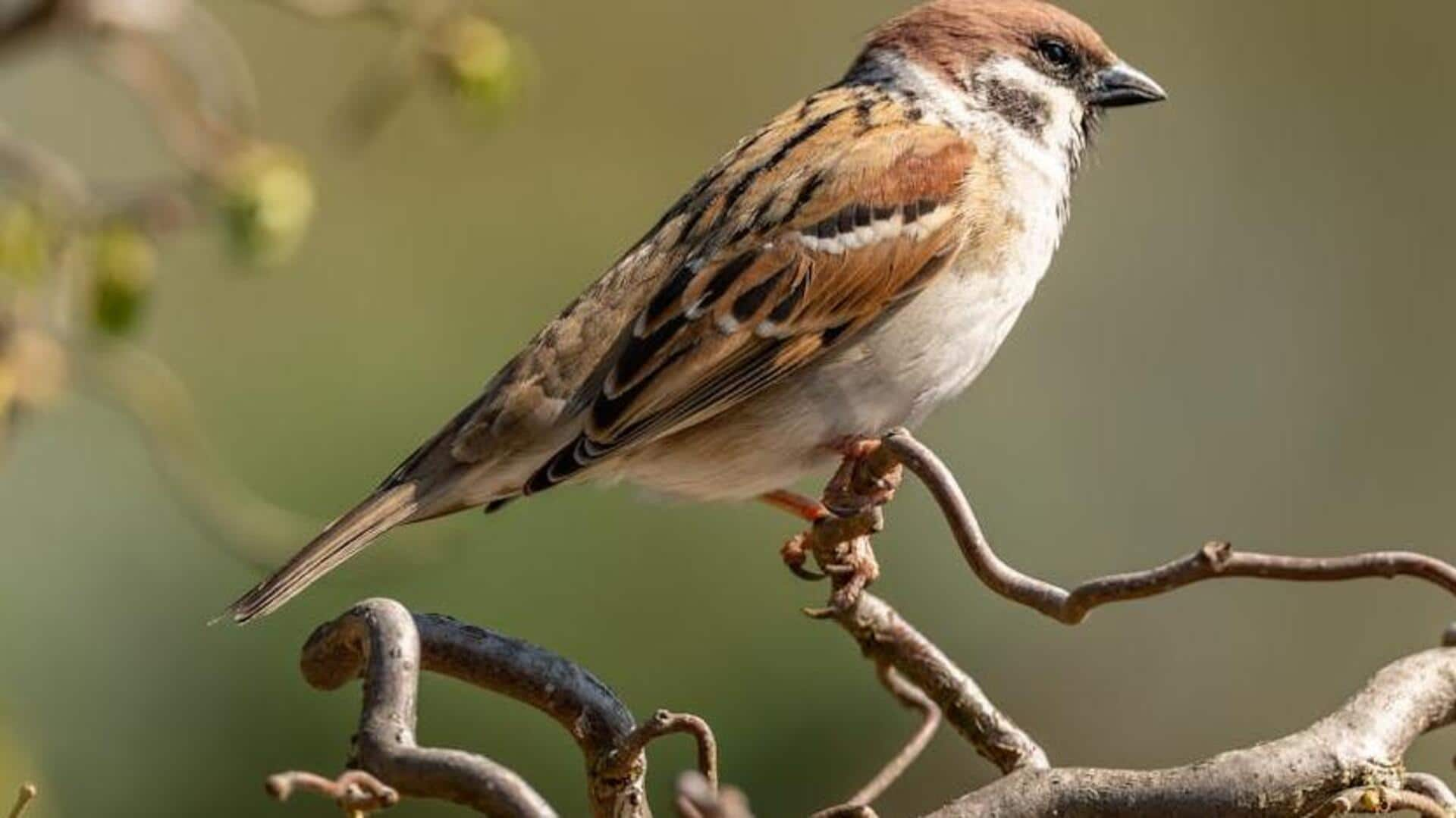
A unique bond: Sparrows in Uttarakhand migrate with villagers
What's the story
The Wildlife Institute of India (WII) is conducting a study that reveals an intriguing relationship between house sparrows and villagers in the Indian Himalayas, specifically in Uttarakhand. The research, sponsored by the Uttarakhand forest department, aims to understand the ecology and population dynamics of house sparrows in this region. Preliminary findings indicate that these birds migrate alongside residents, moving south during winter and returning to high-altitude villages in summer. This pattern is particularly evident in villages situated above 3,000 meters.
Bird banding
Sparrows's altitudinal movements tracked by WII researchers
As part of the study, WII researchers have tagged nearly 200 sparrows with rings or bands on their legs for individual identification. This initiative is designed to track the altitudinal movements of these birds from high-altitude villages. WII scientist R Suresh Kumar confirmed that "sparrows in Uttarakhand are unique in that they occur as high as 3,500 meters and more." He also verified that these sparrows migrate down with people leaving the area during winter months.
Conservation initiatives
Sparrow conservation efforts and future study plans
The study also includes a conservation awareness campaign among local residents. Nest boxes have been distributed in various locations including Purola, Rudrapur, and Haridwar. Renu Bala, a PhD Scholar at WII, emphasized the importance of providing adequate nesting spaces and shared valuable insights into the population status and nesting ecology of house sparrows. In future stages, a WII team will survey house sparrows in Nelong, Uttarkashi, and other high-altitude villages to understand their adaptation to cold climates and feeding habits.
Cultural impact
Study enhances cultural narrative of Bhotiya tribe
The ongoing study has also enriched the cultural narrative of the Bhotiya tribe, who inhabit villages such as Malari, Niti, Gamsali, and Dronagiri. These villages have become major tourist attractions. The unique bond between the villagers and their winged companions offers a distinctive narrative for visitors. This relationship between humans and sparrows in Uttarakhand not only provides an interesting insight into nature's dynamics but also adds a new dimension to the cultural life of these high-altitude communities.
Information
Sparrows and humans evolved together, says WWF India
Known solely to exist in intimate proximity to people, the house sparrow has evolved alongside humans rather than in woodlands. It is estimated that it first interacted with humans around 10,000 years ago. The bird has lived in gardens and buildings with people in peace for many years, but during the past 20 years, its numbers have decreased in nearly every city around the world.
Endangered
If urbanization was the reason, why only sparrows got endangered?
More than a decade ago, the house sparrow was added to the "Red List" by the British Royal Society for the Protection of Birds based on study conducted by researchers worldwide, including those in India. In fact, many Indian cities witnessed a total "vanish" of these little chirpy birds. Several variables, including urbanization, particularly in metropolitan areas were noted as top causes. However, why no other bird except house sparrow felt threatened? The answer: Unscientific proliferation of mobile towers.
Information
50 sparrow eggs suffered damage in 5 minutes of radiation
Per a study conducted in 2012, about 50 house sparrow eggs' embryos suffered damage after five to 30 minutes of radiation exposure from mobile towers. The researchers also noted that due to the impact, these birds become aggressive and suffered grave reproduction problems.
Cause
How mobile towers became a threat to sparrows?
According to researcher Dr. Sainudeen Pattazhy, Associate Professor of Zoology at SN College at Kollam, the frequency at which these towers generate electromagnetic radiation is between 900 and 1800 MHz. If this radiation were to continuously enter the bird's body, it would have an adverse effect on its neurological system and ability to navigate. It loses its ability to navigate and hunt. He observed that sparrows who built their nests close to towers abandon them within a week.
Further
Pattazhy noted sparrow eggs laid near towers didn't hatch
In one of his old studies about sparrows, Pattazhy noted that the bird could lay one to eight eggs at once. Typically, 10 to 14 days pass during incubation, however, even after 30 days, the eggs put in nests close to towers did not hatch. Because house sparrows are a valuable tool for studying general biological issues and controlling pests, their protection is imperative.